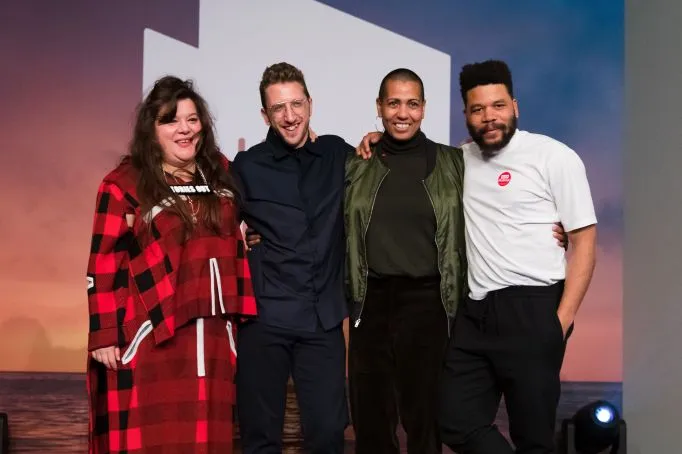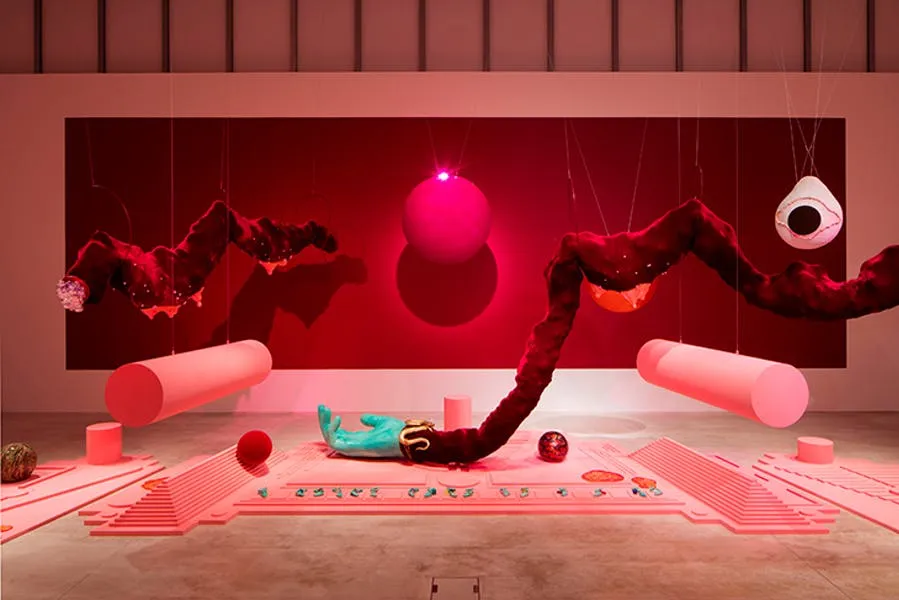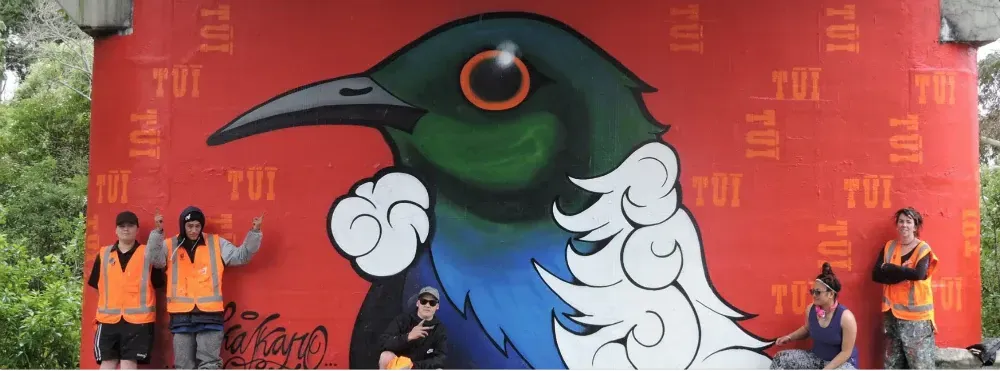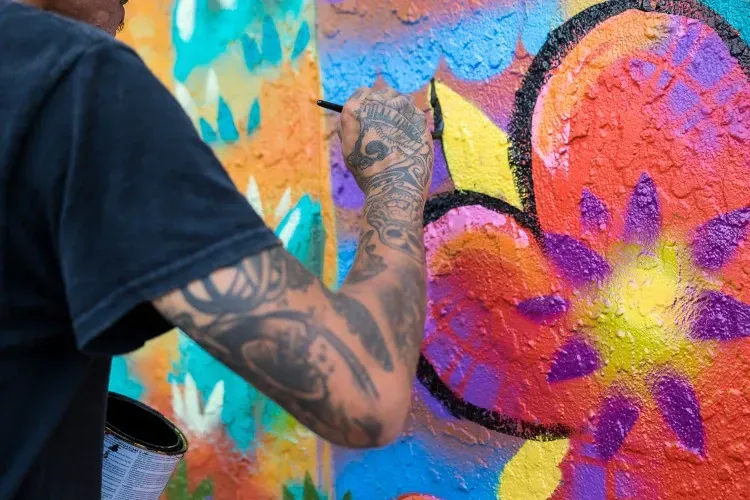Has the art world gone bananas?
Written by
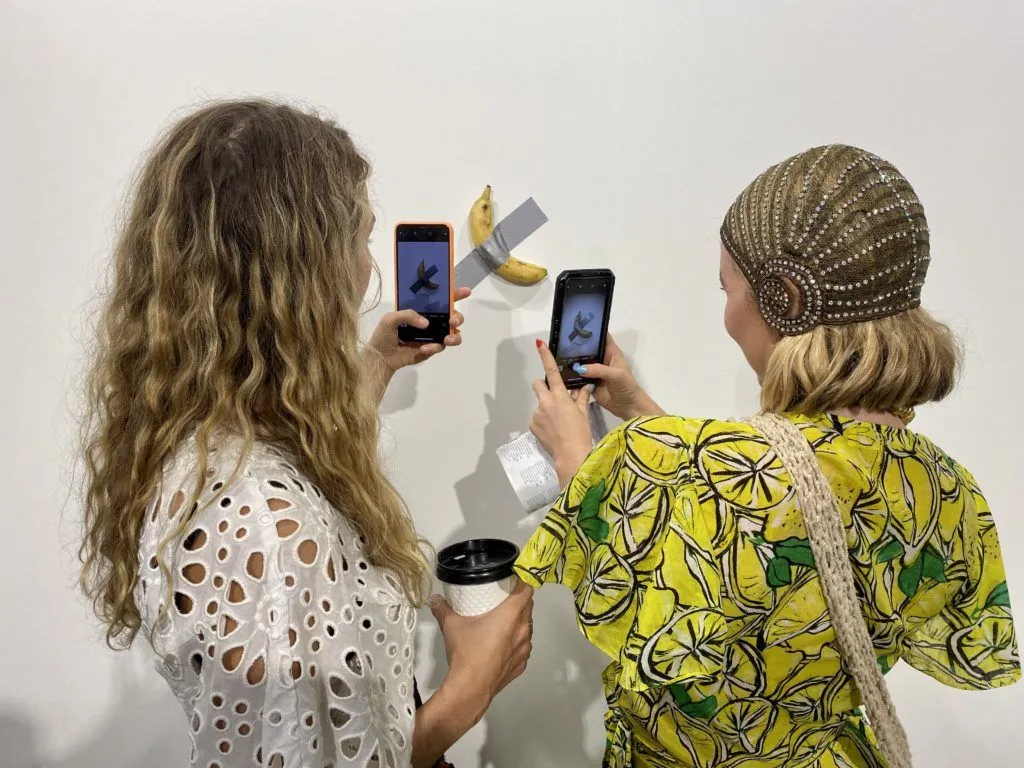
Art headlines have been making waves around the world this past week, so we’re doing things a little different this Lowdown and taking readers on an O.E before landing back in Aotearoa.
“It’s one banana, what could it cost, $120,000?”
It seems inflation has hit the banana market hard since Arrested Development’s matriarch Lucille Bluth last did her calculations.
The 2019 Miami Art Basel went bananas for the latest work by Italian artist and self-professed prankster, Maurizo Cattelan. In the spirit of Warhol, Klein and Koons, Cattelan questioned the nature of art by duct-taping a ripe banana to a gallery wall – his first offering in 15 years.
Besides causing a social media frenzy, it a-peeled to three buyers and two museums paid between $120,000 and $150,000 USD each for editions of the work, entitled Comedian.
In an inevitable twist, Cattelan found himself pranked by performance artist David Datuna, who unpeeled and ate the banana in a piece called Hungry Artist. Cattelan’s representatives were unfazed, saying he “did not destroy the artwork – the banana is the idea… Without the certificate of authenticity it goes back to being a banana.” A new banana was then exalted to artistic status by being taped to the gallery wall. Watch the action unfold here.
The brilliance of this tale lies in the fact that beyond its utter absurdity, there is a pertinent message. Cattelan is forcing us to question how value is placed on material goods by the 1% and how spectacle aids the artistic economy in the 21st century. At the same time, Datuna’s performance brought these lofty ideals crashing back down to earth, realigning humanity to the heart of the creative act.
Four winners of the Turner Prize. Source: CNN
Turner Prize turned on its head
Crossing the pond to London, the 35th Turner Prize – a contemporary art award given to a British artist working in Britain – has been momentous. For the first time ever, all four shortlisted artists have been named joint winners of the prize. Tai Shani, Lawrence Abu Hamdan, Helen Cammock and Oscar Murillo formed a collective and wrote a plea to the judges, explaining that they wanted to “expand on what it means to be British”. They said their work “sought to take a stand against isolation and exclusion in a hostile environment with a symbolic gesture of cohesion.”
This year’s shortlist has been notably political, with works exploring the patriarchy, civil rights and migration, and the artists said they did not wish to “pit subjects against each other.” The judges unanimously agreed to this request, saying “we are honoured to be supporting this bold statement of solidarity and collaboration in these divided times. Their symbolic act reflects the political and social poetics that we admire and value in their work.”
DC Semiramis (2019) by Tai Shani at the Turner Prize exhibition at Turner Contemporary, Margate. Photo: David Levene
Australia merges its arts department
Down under, the Australian Government proved themselves to have a backwards mentality when they announced last week the decision to cut its federal Communications and Arts Department. As of February 2020 it will be merged into the Department of Infrastructure, Transport, Regional Development and Communications. The decision has been met with widespread dismay from industry leaders, while the Conservative government insists that it is still committed to the arts.
"The current government is forgetting the power of art to build community, explore identity, to bring joy, to act as a space for vital conversations."
But when the new department doesn’t even have the word ‘arts’ in its title, it’s easy to see their assertions as disingenuous. Furthermore, by only funding major artistic outlets focussed on traditional mediums at the cost of smaller outlets, it compounds the idea that art is elitist and frivolous. The current government is forgetting the power of art to build community, explore identity, to bring joy, to act as a space for vital conversations. The current decision is short-sighted and narrow-minded to say the least. This was eloquently argued by Theatre director Jimmy Dalton.

Kakano Youth Arts Collective
The power of art
If the Australian Government needs further reminding as to the power of art to engage and build communities, they could pop across the ditch to little old Noo Zuild. This week, Kākano Youth Arts Collective launched their end of year exhibition on Corban Estate. Since 2013, Kākano Youth Arts Collective has been installing sculptures and murals across West Auckland as well as working with marginalised youth, encouraging confidence and developing skill sets through weekly art classes. Lynn Freeman from RNZ spoke to one of the students—Troi, who recently held his first solo show—about the collective and his development.
Meanwhile, Wellington Police recently lined the walls of their holding cells with art in a bid to make them a more positive space. The artists ranged from Year 7 students to prisoners from Rimutaka Prison. Down in Christchurch, The Court’s Youth Theatre programme has brought together neuroscience and the personal experience of teenagers to create Brainstorm. Regardless of how long ago your adolescence was, Brainstorm highlights that the trials and tribulations of teenagehood is a truth universally acknowledged.
Boomers: the Cartoon edition
That said, it would be wrong to imply that New Zealand is perfect. The Otago Daily Times rightly came under fire recently for a cartoon by Garrick Tremain making a joke about the Samoan measles epidemic. That a man with a long history of racist and completely tone deaf creations has been given such a large platform by the Otago Daily Mail is permissive of bigotry and at worst an endorsement of it. Historically, cartoonists are satirists. But there is a difference between satire and peoples pain. Because at its heart, satire should be used to speak truth to power, not to mock those who are powerless. Tremain clearly fails to realise this difference. Thankfully, The Spinoff has compiled a handy guide of local cartoonists who actually have something of worth to offer.
Mural by Under Warer Collective for Boon Hamilton Street Art Festival. Source: boonstreetart.co.nz
Artists revealed for Aotearoa’s largest mural
For the last couple of years, Hamilton has been making a name for itself as a street art destination, thanks to the annual Boon Hamilton Street Art Festival. While it’s been great to see a myriad of colour and artistic styles popping up in unexpected nooks and crannies throughout the city, a new collective is going to smash records with the latest creative endeavor in the ‘Tron. Three visual artists - Poihakena Ngāwati (Waikato Tainui), Hana Maihi (Ngāti Mahana), and Te Haunui Tuna (Ngāi Tūhoe) - will be joining forces to create the largest mural in Aotearoa. The currently blank concrete canvas’s official title is The Te Koopuu Mania o Kirikiriroa wall and it stretches 248m from Collingwood Street to Ward St, peaking at 11.4m high. After years of uninspiring attempts to brighten it up, it will be exciting to see what this trio can come up with.
